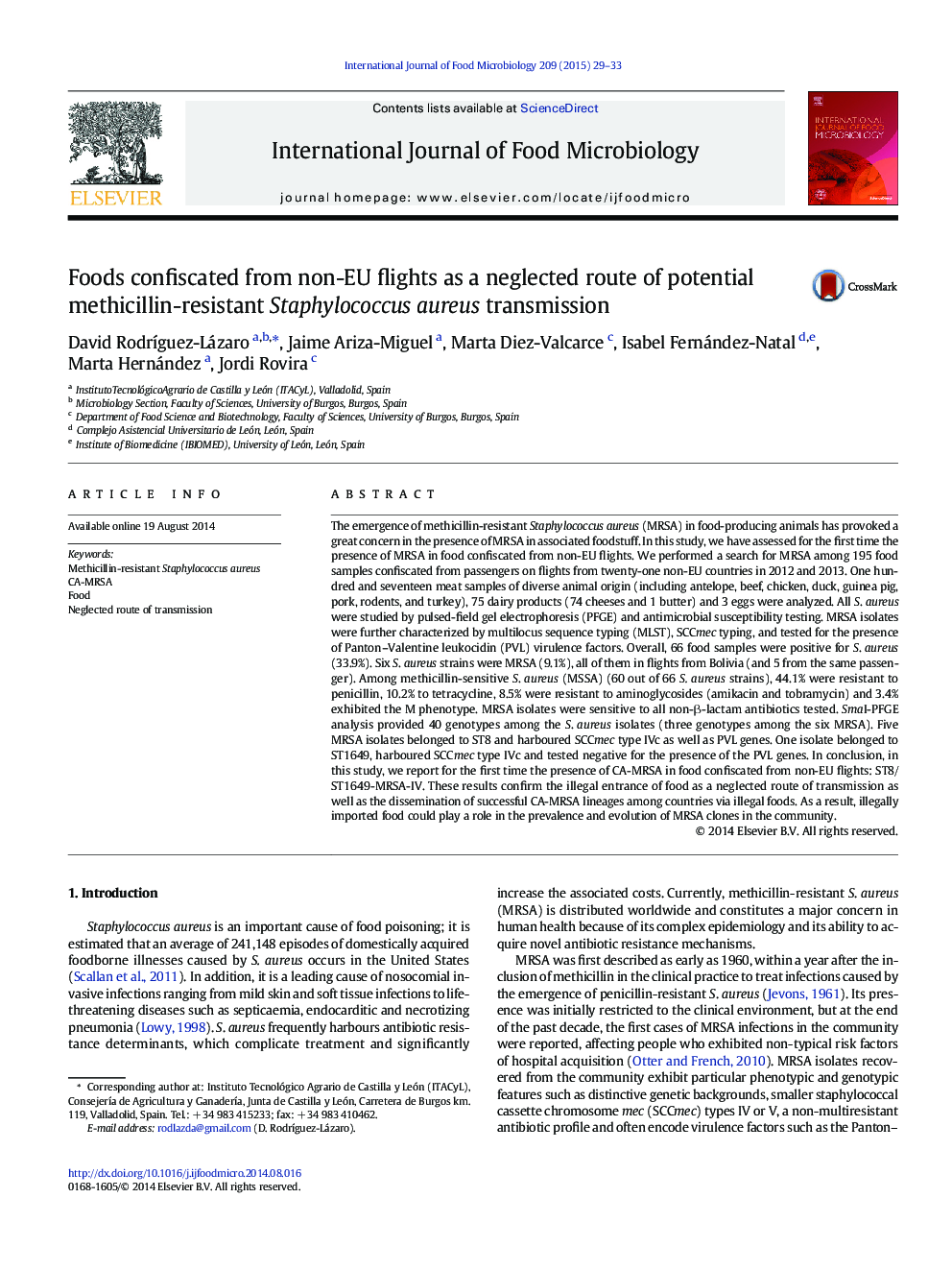| Article ID | Journal | Published Year | Pages | File Type |
|---|---|---|---|---|
| 4366547 | International Journal of Food Microbiology | 2015 | 5 Pages |
•195 confiscated foods from non-EU countries in 2012 and 2013 were tested for MRSA.•66 samples were positive for S. aureus (33.9%), and 6 S. aureus strains were MRSA.•A significant number of strains (23.1%) were resistant to two or more antibiotics.•We report for the first time the presence of CA-MRSA in illegally imported foods: ST8/ST1649-MRSA-IV.•These results confirm the illegal entrance of food as a neglected route of MRSA transmission.
The emergence of methicillin-resistant Staphylococcus aureus (MRSA) in food-producing animals has provoked a great concern in the presence of MRSA in associated foodstuff. In this study, we have assessed for the first time the presence of MRSA in food confiscated from non-EU flights. We performed a search for MRSA among 195 food samples confiscated from passengers on flights from twenty-one non-EU countries in 2012 and 2013. One hundred and seventeen meat samples of diverse animal origin (including antelope, beef, chicken, duck, guinea pig, pork, rodents, and turkey), 75 dairy products (74 cheeses and 1 butter) and 3 eggs were analyzed. All S. aureus were studied by pulsed-field gel electrophoresis (PFGE) and antimicrobial susceptibility testing. MRSA isolates were further characterized by multilocus sequence typing (MLST), SCCmec typing, and tested for the presence of Panton–Valentine leukocidin (PVL) virulence factors. Overall, 66 food samples were positive for S. aureus (33.9%). Six S. aureus strains were MRSA (9.1%), all of them in flights from Bolivia (and 5 from the same passenger). Among methicillin-sensitive S. aureus (MSSA) (60 out of 66 S. aureus strains), 44.1% were resistant to penicillin, 10.2% to tetracycline, 8.5% were resistant to aminoglycosides (amikacin and tobramycin) and 3.4% exhibited the M phenotype. MRSA isolates were sensitive to all non-β-lactam antibiotics tested. SmaI-PFGE analysis provided 40 genotypes among the S. aureus isolates (three genotypes among the six MRSA). Five MRSA isolates belonged to ST8 and harboured SCCmec type IVc as well as PVL genes. One isolate belonged to ST1649, harboured SCCmec type IVc and tested negative for the presence of the PVL genes. In conclusion, in this study, we report for the first time the presence of CA-MRSA in food confiscated from non-EU flights: ST8/ST1649-MRSA-IV. These results confirm the illegal entrance of food as a neglected route of transmission as well as the dissemination of successful CA-MRSA lineages among countries via illegal foods. As a result, illegally imported food could play a role in the prevalence and evolution of MRSA clones in the community.
